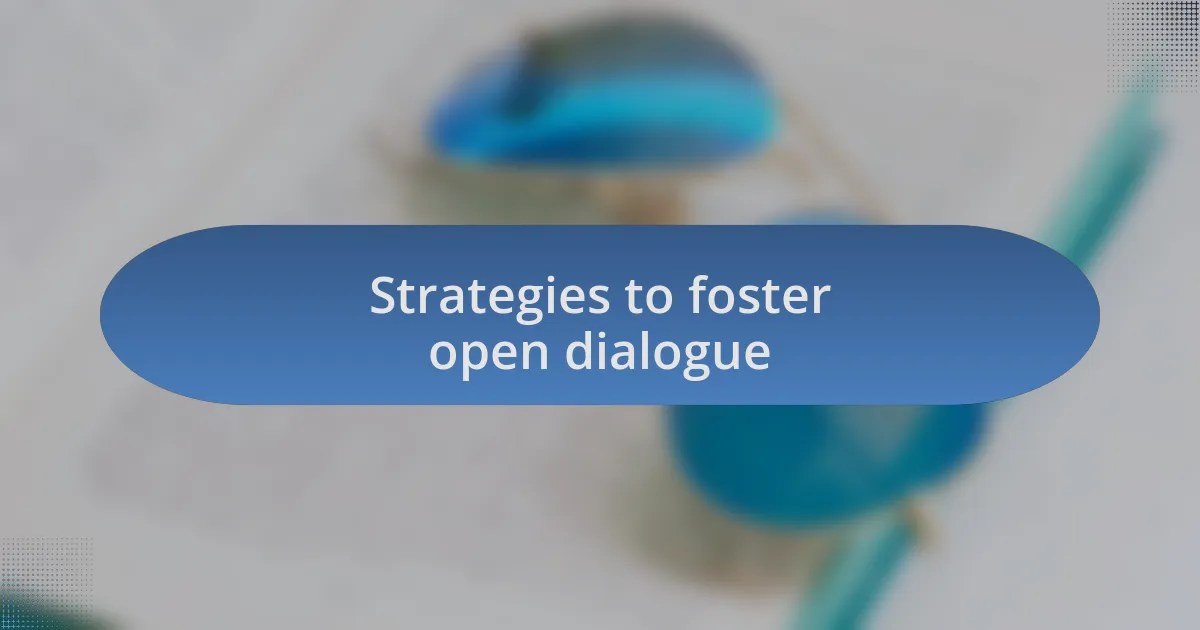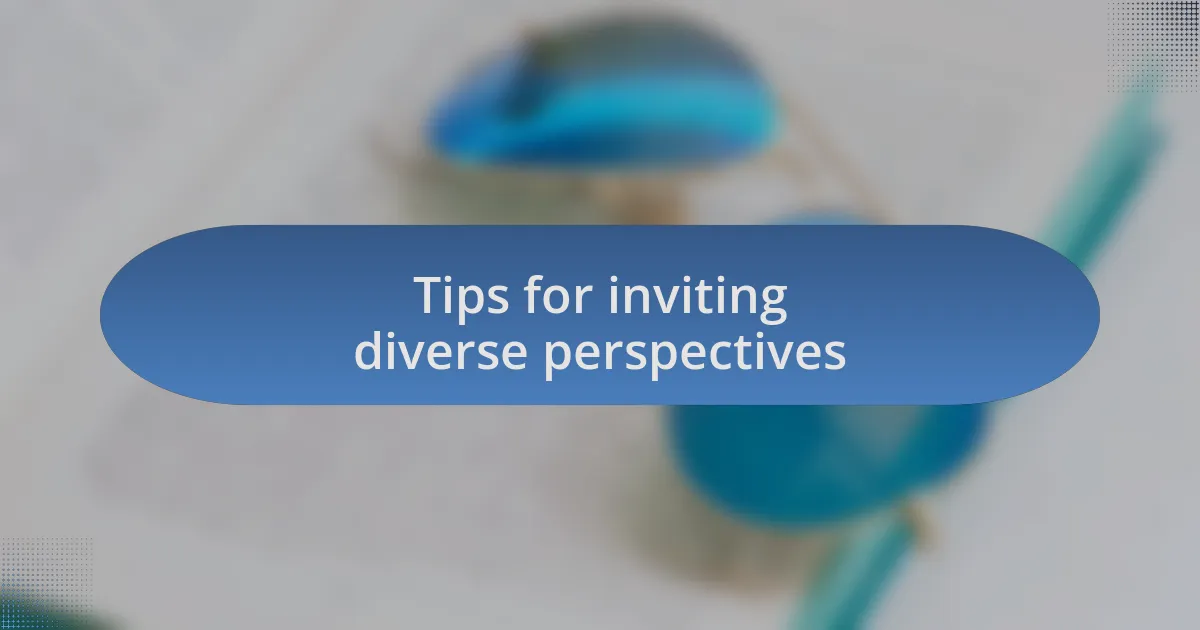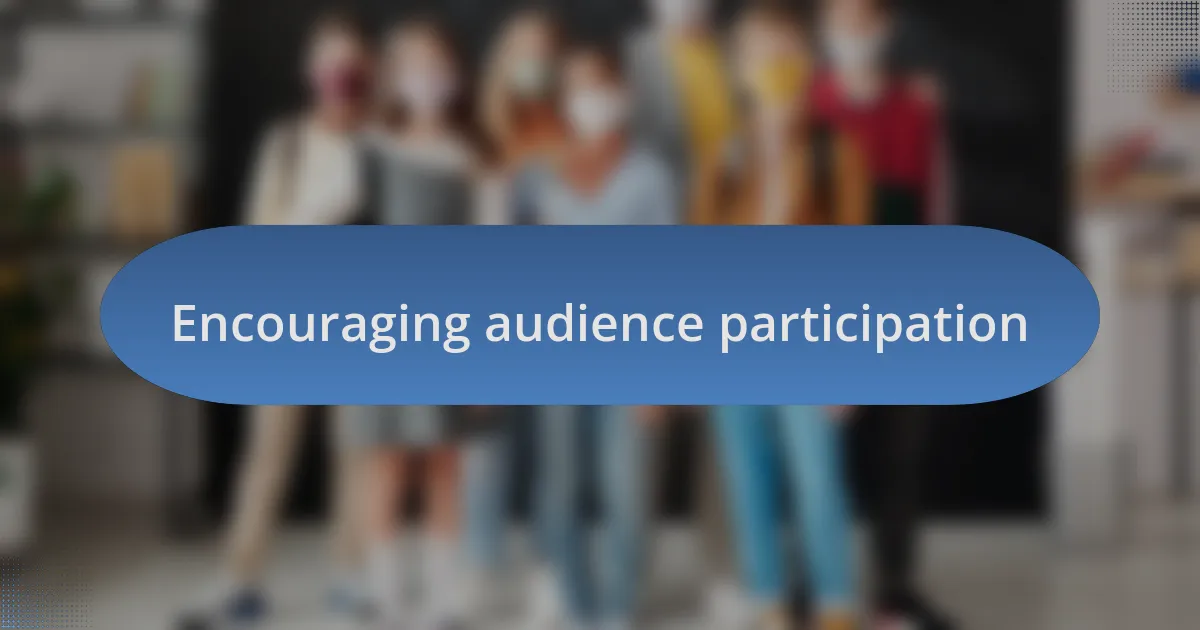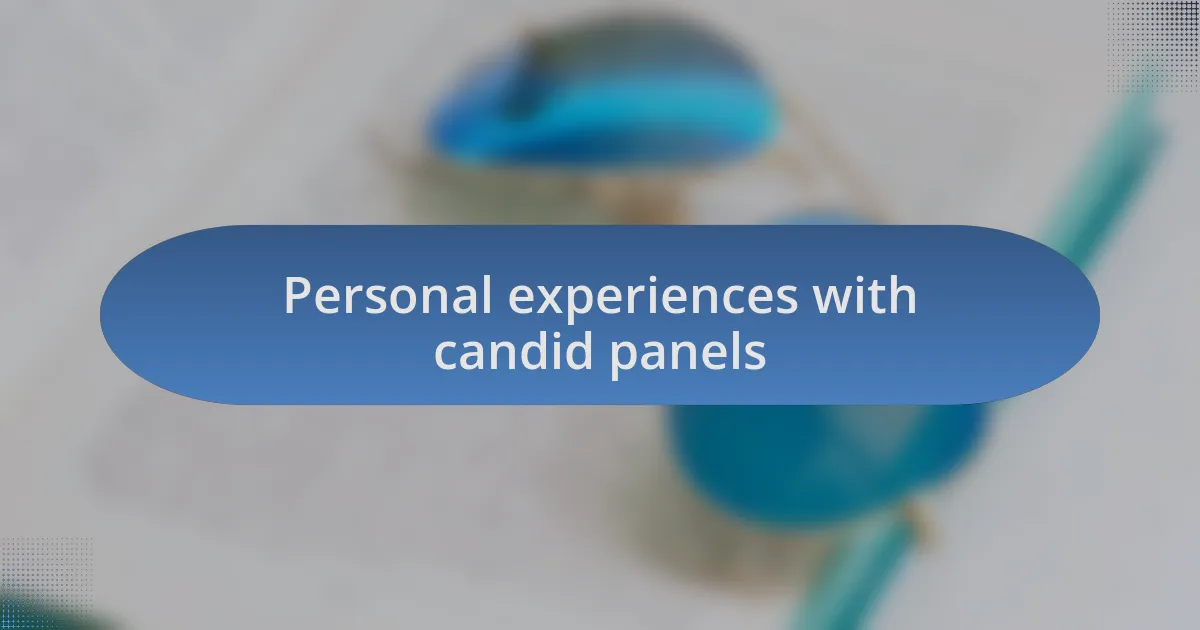Key takeaways:
- Candid conversations foster deeper connections and understanding by encouraging transparency and trust among participants.
- Strategies such as asking open-ended questions and establishing a welcoming environment for vulnerability significantly enhance panel discussions.
- Intentional invitations and creating psychological safety are essential for incorporating diverse perspectives, enriching the dialogue.
- Active audience participation can be ignited through open-ended questions and interactive activities, fostering dynamic exchanges.

Understanding candid conversations
Candid conversations are those honest, open dialogues where participants feel safe to express their thoughts and feelings. I remember a panel I facilitated where a participant shared their struggles with imposter syndrome. That moment changed the entire atmosphere, encouraging others to share their vulnerabilities. It made me realize that such transparency can foster deeper connections and understanding among group members.
When I think about the essence of candid dialogue, I’m often reminded of the importance of trust. How can we expect our panelists to share authentically if they don’t feel secure? In my experience, creating a space where everyone’s voice is valued is essential. It allows participants not just to speak, but to listen, and feel heard, which we all crave.
Candid conversations also serve as a mirror, reflecting not just individual experiences but collective truths. I once witnessed a discussion where conflicting viewpoints sparked vigorous debate, yet every viewpoint was respected. Isn’t it fascinating how diverse perspectives can enrich our understanding? It’s this kind of engagement that truly illuminates the topic at hand and invites a richer exploration of ideas.

Strategies to foster open dialogue
I always emphasize the power of asking open-ended questions to foster dialogue during panels. For instance, in one panel I organized, instead of asking, “Do you agree?” I prompted, “What are your thoughts on this perspective?” This simple shift invited participants to delve deeper into their viewpoints. It’s amazing how the right question can transform a mere discussion into an enlightening conversation.
Another effective strategy I’ve observed is establishing a ground rule about vulnerability being welcomed. I remember a time when I encouraged the panelists to share their most challenging moments. The atmosphere shifted dramatically; the audience could feel the honesty and warmth in the room. This openness not only humanizes the speakers but also invites the audience to connect on a more personal level. When was the last time you felt comfortable enough to share your own insecurities in a discussion?
Lastly, creating a comfortable environment is crucial. I’ve seen how a change in seating arrangements, such as having a circle rather than rows, can promote a sense of equality and accessibility. It’s surprising how these subtle adjustments in the setting can encourage more dynamic exchanges. Have you ever noticed how the physical space influences the nature of the dialogue? When participants feel at ease, they are more likely to engage meaningfully and share their truths.

How to structure panel discussions
Structural aspects of a panel discussion significantly shape the effectiveness of the conversation. In my experience, starting with a well-defined theme ensures everyone is on the same page. For example, in one panel I moderated, I initially outlined the main topic and gave participants a brief overview of the goals. This clarity not only created focus but also encouraged panelists to prepare specific insights that resonated with the theme.
A pivotal element I’ve found is the role of transitions. When moving from one panelist’s point to another, smooth transitions can enhance the flow of discussion. I’ve noticed that simply acknowledging the previous speaker’s contributions before shifting to the next can enrich the dialogue. It’s like weaving a tapestry where each thread adds depth and color to the overall narrative. Ever wondered how a simple acknowledgment can make such a difference in panel dynamics? It creates a collective atmosphere rather than a disjointed exchange.
Additionally, leveraging time wisely is essential to creating a balanced discussion. Allocating specific time slots for each topic and sticking to them encourages engagement from all. I recall a session where I used a brief timer for each segment, resulting in heightened anticipation among panelists and the audience. The urgency seemed to spark more lively exchanges. How do you think the fear of time slipping away impacts performance? It often leads to sharper, more concise insights and keeps everyone engaged.

Tips for inviting diverse perspectives
Creating a space for diverse perspectives starts with intentional invitations. In my experience, I’ve found that directly reaching out to individuals from varying backgrounds makes a significant impact. For one event, I took the extra step to include an audience survey before the panel, asking participants what voices they felt were missing. This approach not only engaged the attendees but also allowed me to tailor invitations to those who could add unique insights.
Another tip involves fostering an environment of psychological safety. I vividly recall a panel where I opened with a personal story about my own learning journey. This vulnerability encouraged others to share their experiences more freely, leading to a richer discussion. Can you imagine how sharing our struggles can pave the way for others to open up? It creates connections that transcend typical conversation barriers, inviting perspectives that might otherwise remain silenced.
Lastly, leverage thematic diversity in your panel topic choices. I once organized a panel on innovation that specifically included voices from community activists alongside tech entrepreneurs. The variety sparked unexpected synergies, demonstrating how different contexts can offer fresh ideas. It’s fascinating how conversations can shift dramatically when participants feel their distinct experiences are respected and valued. How do you think mixing disciplines could elevate your next panel discussion? I’ve seen first-hand the magic that happens when people from different fields come together to share their insights.

Encouraging audience participation
Creating avenues for audience participation is essential to fostering engaging discussions. I’ve often found that posing open-ended questions can ignite curiosity. During one panel, I requested attendees to share a moment when they felt their voice made a difference. The responses created a lively interaction, transforming a standard Q&A into a dynamic exchange filled with diverse stories.
Active participation also flourishes through interactive activities. In a recent seminar, I integrated small breakout sessions for brainstorming ideas around the panel’s theme. The energy in the room was palpable, as participants eagerly collaborated. Have you ever witnessed how a simple shift from passive listening to active engagement can revitalize a discussion? I believe these moments, where everyone has a stake, truly enrich dialogues and deepen connections.
Additionally, the role of humor should not be underestimated. I once included a light-hearted icebreaker to kick off a serious discussion. It put everyone at ease, and laughter broke down barriers, allowing for more authentic conversations as the event progressed. Isn’t it amazing how a bit of levity can open the door to deeper vulnerabilities and honest sharing? When audiences feel comfortable and involved, the outcomes are always more profound.

Personal experiences with candid panels
One remarkable experience I had with a candid panel occurred during a workshop on mental health in education. The panelists were vulnerable about their own struggles, which prompted the audience to open up in ways I hadn’t anticipated. Listening to a teacher share her battle with anxiety deeply resonated with many in the room; it was a powerful reminder that we are often not alone in our challenges.
I also recall a time when I moderated a discussion on inclusivity in schools. A participant boldly voiced her frustrations about feeling unheard, which sparked an impromptu dialogue that shifted the mood. Suddenly, what began as a formal event transformed into an intimate exchange, where individuals exchanged stories and strategies, generating solutions directly from the heart of the audience. This moment solidified my belief that genuine dialogue can catalyze real change.
In another instance, while facilitating a panel on technology and education, I encouraged speakers to share personal anecdotes throughout their presentations. The result was a tapestry of experiences that painted a vivid picture of the struggles and triumphs educators face today. It was clear that authenticity not only engaged the audience but also fostered a sense of community among those present. Have you ever witnessed how shared experiences can build bridges of understanding? For me, these candid exchanges are what truly elevate the conversation.